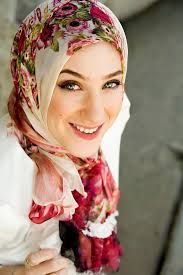I Am a Muslim Woman Who Finds Freedom Behind My Veil
What does a ‘real’ woman look like? Is it in the curve of her hips or the price of her Manolo’s? Is it the way she styles her hair or the allure of her eyes peeking behind Chanel sunglasses?
Because the Western world’s expression of feminine beauty lends itself to the promotion of less clothing equating to more freedom, Muslim women and their fully covered frocks are often viewed as oppressive and diminishing.
There is a distinct difference between being pretty and beautiful yet, for two women who are devoted Muslims, their beauty has everything to do with their choice to cover themselves.
Afshan Rehman, a 25-year-old psychology student in Illinois daydreams about helping women to heal their wounds. She also enjoys playing ‘Dare’ with her friends and is not known to back down from one. One thing she wouldn’t dare do, is reveal her body to strangers, going against the custom introduced by her Muslim religion, one that she says has made all the difference in her positive self-image.
“When I am out in public, I am my own person,” Rehman said. “I am truly an individual when I walk out of my home dressed in the Islamic clothing because I am not like the majority of the people who are wearing one fashion trend after another.”
The hijab, abayah, and niqab are the three pieces that usually construct the female Islamic wardrobe. The hijab is the head scarf, the abayah is a one piece long, loose clothing that covers everything from the neck to the toes and the niqab is the veil that covers your face. Rehman was introduced to traditional Islamic wear in stages. She first began wearing the hijab when she was in the fourth grade.
“I had just transferred schools and was the only Muslim in the entire public school,” Rehman recalled. “I was scared at first but also proud that I would be able to represent my religion in such a way. I started wearing the abayah in sixth grade. I felt free. Just a few months after, I started to wear the niqab and it was the best decision I have ever made in my life.”
Although Rehman states she feels free behind her veil, not everyone in her life agrees with her wardrobe choice — some of her family members who are Muslim believe her way of dressing is outdated and embarrassing.
“There was this one incident where I had gone out with one of my cousins, we are not very close, and she literally ignored me when we were at the mall,” Rehman remembered. “She would act like I was someone she didn’t know. It was truly sad on her part and on mine. She didn’t have the confidence to be seen with me in public, and I did not have the confidence to confront her about her actions.”
Rehman does not fault the Western world for their perception of who she is under her hijab. She believes that it is only human nature to be afraid of things that are different. “People automatically think that someone else is making us do what we are doing, therefore the idea that we are oppressed was formed,” Rehman said.
In Pakistan, a far cry from the initiators of the Western idea of beauty that has set the standard for beauty worldwide, you might find 22-year-old Saher Binte Haider’s face covered by pharmacy books as she studies to become a healthcare professional. A devoted cat lover, Haider lovingly defends her choice to wear Islamic clothing citing several benefits of wearing her veil.
“The majority of Muslim women in our country are wearing it by their own choice,” Haider said. “They are not forced to do so by their fathers, brothers or husbands. It also gives me great pleasure when I think that I am not a market product who every other man enjoys looking at, remarking and discussing about my body. The only one who has a right to look at my body is the person who will be my husband and only he will have the right to get pleasure by looking at it. No one else.”
Haider chose to wear the abaya and scarf at the onset of her teenage years, inspiring her own mother to begin wearing it. “At that time, the reason to wear Islamic clothing for me was not merely to please Allah, but to stop men from staring at my body because that made me feel insecure, uncomfortable and unsafe,” Haider admitted. “I lost my confidence. Wearing my veil gave me my confidence back.”


















